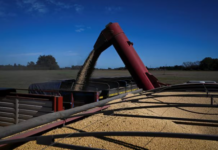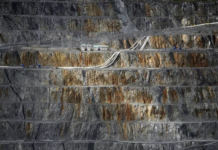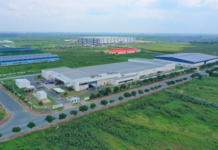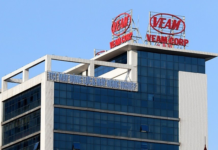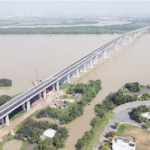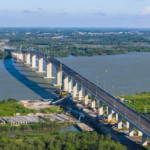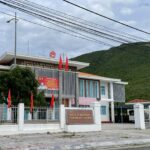According to the decision by the Ministry of Construction, the Railway Project Management Board has been appointed as the investor for two key sub-projects: Sub-project 1 focuses on infrastructure development connecting stations along the route and the station plaza, with a preliminary investment of nearly VND 2,300 billion; Sub-project 2 involves the construction of railway infrastructure, with a preliminary investment exceeding VND 155,500 billion.
These two sub-projects are considered the technical core and primary infrastructure of the entire route, crucial for determining the project’s timeline, quality, and future operational efficiency.
For electrical works with voltages of 110 kV and above, Vietnam Electricity (EVN) has been tasked with leading the implementation of sub-projects for relocating electrical infrastructure, with a preliminary investment of nearly VND 4,590 billion.
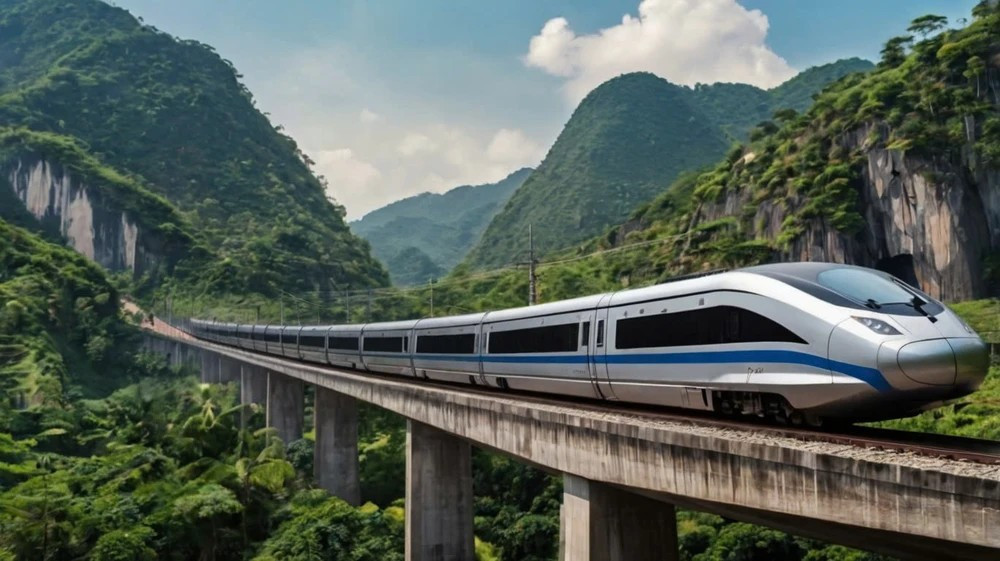
Illustrative image of the Lao Cai – Hanoi – Hai Phong Railway. Photo: AI.
Simultaneously, the People’s Committees of provinces and cities along the route will oversee compensation, resettlement support, and the relocation of technical infrastructure (including electricity under 110 kV, water, and telecommunications). The preliminary investment allocation for each locality is as follows: Lao Cai approximately VND 8,200 billion; Phu Tho over VND 12,360 billion; Hanoi over VND 5,650 billion; Bac Ninh nearly VND 1,090 billion; Hung Yen over VND 2,320 billion; Hai Phong nearly VND 11,220 billion.
Localities are encouraged to proactively allocate budget funds to expedite land clearance and resettlement support, ensuring the project’s overall timeline.
The Planning and Finance Department has been tasked with leading and coordinating efforts to balance and allocate appropriate funding in line with each project’s timeline, preventing bottlenecks during implementation. Agencies such as the Department of Construction Economics and Investment Management, Vietnam Railways Agency, and the Department of Science, Technology, Environment, and Construction Materials are also responsible for collaboration and oversight to ensure compliance with legal regulations.
This decision replaces Decision No. 1038/QD-BXD dated July 8, 2025, updating the task allocation and responsibilities to align with actual progress and government and National Assembly requirements.
Under National Assembly Resolution 187/2025/QH15, the Lao Cai – Hanoi – Hai Phong railway project, spanning approximately 420 km, will connect the border rail link in Lao Cai Province to Lach Huyen Station in Hai Phong City. With a total investment of over VND 203,230 billion (equivalent to USD 8.37 billion), the project is scheduled to commence on December 19 and is expected to be completed by 2030 at the latest.
The railway will have a design speed of 160 km/h on the main route between Lao Cai Station and Lach Huyen Port Station, 80 km/h on branch lines from Lao Cai, and 120 km/h on sections overlapping the Eastern Ring Railway in Hanoi.
Upon completion, the railway will enhance cargo transport capacity, reduce logistics costs, and alleviate pressure on the northern region’s road and seaport systems. It will serve as the sole direct connection between the Northwest region and Hai Phong’s deep-water port, playing a pivotal role in inter-regional transport networks and international trade connectivity.
Experts suggest that the railway’s completion will foster the development of an urban-industrial-logistics corridor along the Hanoi – Hung Yen – Hai Phong axis, emerging as a new growth driver for the Red River Delta region.
Unlocking the Future: 8 Mega Bridge & Road Projects Pave the Way for a 20 Million-Strong Super Metropolitan Region
These transformative projects will catalyze regional infrastructure development, driving unprecedented growth and connectivity.


